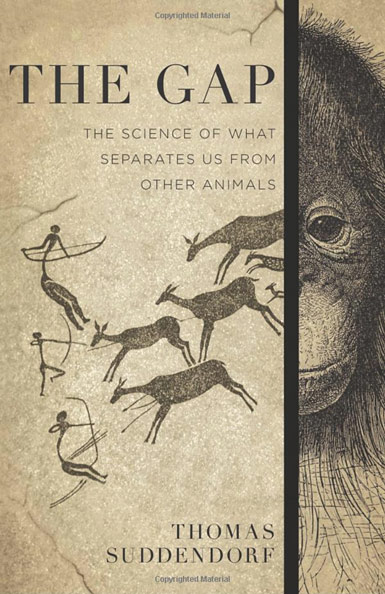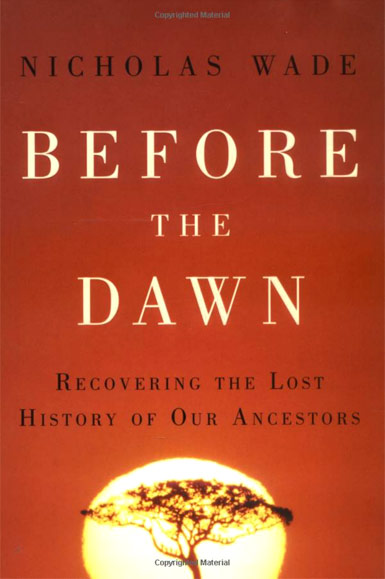
211 Universal Human Traits: Characteristics All Humans Share
In Human Universals, Anthropologist Donald E. Brown posited a list of several hundred human traits, “features of culture, society, language, behavior, and psyche for which there are no known exception”—characteristics that represent the evolution of our species’ mental adaptation to communal life.
In this list, “they,” “them,” and “their” refer to the people of any given culture.
- They are aware of a difference between culture and nature
- Culture is embodied in their language
- They think about and discuss their internal state and the external world
- They use language to organize, respond to and manipulate the behavior of their fellows (Note: their language is a window into their culture, minds, and actions)
- Language allows them to think and speak in abstraction
- Language allows them to think and speak about things or processes not physically present
- Proficient use of language gains prestige, especially for males (because skillful speech allows him to manipulate the behavior of his fellows more effectively)
- Gossip is an important means of verbal manipulation
- Non-verbal expression allows more meaning than mere words indicate
- Speech is used to misinform as well as to inform
- Individuals understand lying and watch for it in others
- Language use includes ways to be funny and to insult
- Speech is highly symbolic
- Sound and sense (meaning) are only arbitrarily associated
- Language includes phonemic, grammatical and semantic features
- Speech phonemes form a system of contrasts (e.g. kill vs. kiss or pat vs. bat) and the number of phonemes is from 10 to 70
- Language undergoes change
- Language includes a series of contrasting terms that theoretically could be phrased in 3 ways, but are only phrased in 2 ways (for example, “wide” and “narrow” are terms that enable us to express contrast without having to say “wide” and “not wide” or “narrow” and “not narrow”)
- By virtue of its grammar, the language conveys some information redundantly. For example, in English both the subject and verb convey number.
- The grammar includes nouns and verbs, and the possessive – possessive of both “intimate” or “inalienable” possessions–“my hands;” and “loose” or “alienable” possessions– “my axe”)
- There are special forms of speech for special occasions
- The language includes figurative speech (metaphor and metonymy)
- There is onomatopoeic speech
- There is poetry in which lines, demarcated by pauses, are about 3 seconds in duration
- There are unique specific elementary units of meaning not found in other cultures
- A few words or meanings are found in all cultures (e.g., black, white, hand, face)
- There is kin terminology
- Durational time is explicit (or rarely semantically implicit) in the language, and the language has units of time (days, months, seasons, years, etc.)
- There is a temporal cyclicity to their lives
- They distinguish past, present and future
- The language classifies many different topics such as parts of the body, inner states (such as emotions, sensations and thoughts), flora, fauna, etc.
- The language refers to such semantic categories as motion, speed, location, dimension, and other physical properties; to giving (e.g., lending); and to affecting things or people
- Some words will have multiple meanings
- There are numerous antonyms and synonyms
- More frequently used words will tend to be shorter, and less frequently used words are longer
- Language includes proper names and pronouns – at least 3 persons (e.g. I, you, he), and 2 categories of number (e.g. singular and plural)
- Language includes numerals (at least one, two and many)
- There are separate kin categories that include father and mother
- Kinship terms are partially or wholly translatable by reference to relationships inherent in procreation (e.g. father, son)
- They have an age terminology that includes age grades in a linear sequence (e.g. baby, child, adolescent, adult)
- They have a sex terminology that is fundamentally dualistic (even if there are 3 or 4 categories)
- Naming and taxonomy are fundamental to their cognition, including binary discriminations (such as black and white) and gradations between polar opposites.
- There are elementary logical notions (“not,” “and,” “same,” “equivalent,” “opposite,” etc.)
- They distinguish the general from the particular, and parts from wholes
- They use conjectural reasoning (e.g., using minute cues to deduce the presence of animals)
- Language is not the only means of symbolic communication (e.g., gestures, exclamations)
- They interpret external behavior to grasp interior intention
- Facial communication is complex – and several facial expressions are recognized everywhere
- Smiling while greeting signifies friendly intentions
- They cry when they feel unhappiness or pain
- They can mask, modify and mimic otherwise spontaneous expressions
- They show affection as well as feel it
- They have a psychological conceptualization of people (awareness of self in relation to others)
- They distinguish the self from others
- They see the self as subject and object
- They see people as influencing events (i.e. as neither wholly passive recipients of external action nor wholly autonomous)
- They see people as responsible for their actions
- They distinguish actions that are under control from those that are not
- They understand the concept of intention
- They know people have a private inner life
- They know people experience pain and other emotions
- They distinguish normal from abnormal mental states
- They recognize that individuals have differing characters
- They are capable of empathy
- They are moved by sexual attraction
- They have childhood fears (loud noises, strangers)
- They react emotionally (usually with fear) to snakes
- With effort they can overcome some of their fears
- The Oedipus complex is a part of male psychology
- They recognize individuals by their faces, which means they have a concept of the individual (often implicit)
- They recognize individuals in other ways as well
- They make tools, of many different kinds
- They are dependent on their tools
- They use tools to make tools
- They make cutters
- They make pounders
- They make containers
- They make something like string (cord, vine, wire, etc) to tie things together
- And to make interlaced materials
- They know and use the lever
- They have weapons
- They make tools that can be used over and over again
- They make some tools in arbitrary patterns that allow us to distinguish one people’s tools from another, and these patterns persist beyond any one person’s lifetime
- Most of them are right-handed
- They know how to use fire (most cultures know how to make it)
- They use fire to cook food and for other purposes as well
- Tools and fire do much to make them more comfortable and secure
- They have other ways to make themselves feel better, including substances like intoxicants, stimulants, or narcotics
- They have some form of shelter from the elements
- They have patterns of preparation for birth
- And for giving birth
- And for postnatal care
- They have a more or less standard pattern and time for weaning infants
- They live part or all of their lives in groups
- An important group is the family
- One or more groups maintain a unity even though the members are dispersed
- There are groups defined by locality or claiming certain territory, even if they happen to live almost their entire lives as wanderers upon the sea
- They are materially, cognitively, and emotionally adjusted to the environment in which they normally live
- They are characterized by a sense of being a distinct people
- They judge other people in their own terms
- The normal family core is composed of a mother and children
- The biological mother usually is the social mother
- There usually is a man involved on a more or less permanent basis
- He serves minimally to give the children a status in the community and/or to be a consort to the mother
- There is an institutionalized publicly recognized right of sexual access to a woman deemed eligible for childbearing (e.g., marriage) – almost always by a male, not always by a single individual
- There is a pattern of socialization – children are not left to grow up on their own
- Senior kin are expected to contribute substantially to socialization
- One way children learn is by watching elders and copying them
- Socialization includes toilet training
- Through practice, children and adults perfect what they learn
- They learn some things by trial and error
- One’s own children and other close kin are distinguished from more distant relatives or nonrelatives, and close kin are favored in various contexts
- Sexual regulations affect relationships between family members and relationships to outsiders, limiting or eliminating mating between genetically close kin
- Mother-son mating is taboo
- Sex is a topic of great interest, though there may be contexts in which it is not discussed
- There is a social structure, with statuses and roles
- Some statuses and roles are based on kinship, age and sex
- There are statuses and roles beyond kinship, age and sex
- There are both ascribed statuses (e.g., based on kinship, age, sex) and achieved statuses
- There are rules of succession to some statuses
- There are social identities, including collective identities, that are distinguishable from the individuals who bear them – i.e., some statuses are spoken of as if they were entities that can act and be acted upon (e.g., the legislature punished the university)
- Prestige is differentially distributed, and not all individuals are economically equal
- Inequalities of various sorts are acknowledged (they may be approved of or disapproved of)
- There is a division of labor – minimally based on age and sex statuses, e.g., women have more direct child care duties than men
- Children do not engage in the same activities in the same way as adults
- Men and women, and children and adults are seen as having different natures
- Men on average are more physically aggressive than women and are more likely to murder
- Men form the dominant public political element
- Women and children are correspondingly submissive or acquiescent (particularly) in the public political sphere
- In addition to division of labor, there are customs of cooperative labor
- There are reciprocal exchanges, whether of labor, or goods, or services, in a variety of settings
- Reciprocity (including retaliation) is an important element in the conduct of peoples’ lives
- They engage in trade
- They give gifts, too, whether reciprocal or not
- In certain contexts, food is shared
- They attempt to predict and plan for the future
- Some plans involve the maintenance or manipulation of social relations
- They have triangular awareness – they think of their own relationships to others and of the relationships between others in relation to themselves
- They form coalitions
- They have government
- Some regulation takes place in a framework of corporate statuses – statuses with orderly procedures for perpetuating membership in them
- They have leaders, though they may be ephemeral or situational
- They profess to admire generosity, and this is particularly desired in a leader
- No leader has complete power lodged in himself alone
- Leaders go beyond the limits of reason and morality
- They always have a de facto oligarchy, since they never have a complete democracy, and they never have a complete autocracy
- They have law (at least rules of membership, rights and obligations)
- Violence and rape are proscribed in certain situations
- Unjustified murder is proscribed
- There are sanctions for infractions, including removing offenders from the social unit, whether by expulsion, incarceration, ostracism, or execution
- They punish certain acts that threaten the group or are alleged to do so
- Conflict is more familiar than they wish it were, and they have (imperfect) ways of dealing with it
- Wronged parties may seek redress
- Consultation and mediation are used in some conflict cases
- Important conflicts are structured around in-group-out-group antagonisms
- These antagonisms divide them as an ethnic group as well as set them off from other ethnic groups
- Ethical dualism distinguishes the in-group from the out-group
- Right is distinguished from wrong
- Responsibility and intentionality are recognized
- Promises are recognized and employed
- Reciprocity is a key element in morality
- Ability to empathize also is a key element in morality
- Envy is ubiquitous, and there are symbolic means for dealing with its unfortunate consequences such tipping a waiter, offering consolation prizes, or having losers congratulate winners
- Ideals include etiquette and hospitality
- There are customary greetings and customs of visiting kin or others who dwell elsewhere
- There are standardized, preferred, or typical times of day to eat
- There are feast occasions
- There are normal daily routines of activities
- They are fundamentally diurnal
- There are standards of sexual modesty
- Copulation normally is not done in public
- There are some attempts to use modesty in relieving themselves
- Certain utterances are taboo
- Some foods are taboo
- There are some foods (e.g., sweets) that are relished
- There are religious or supernatural beliefs beyond the visible and palpable
- They anthropomorphize and some (if not all) of them believe things that are demonstrably false
- Magic is practiced to do such things as to sustain and increase life and to win the attention of the opposite sex
- There are theories of fortune and misfortune
- There are explanations for disease and death
- Sickness is seen to be connected to death
- There are medications (and other procedures) to heal the sick
- Divination is practiced
- There are attempts to control the weather
- There are rituals
- Rituals include rites of passage that demarcate the transfer of someone from one status to another
- The dead are mourned
- There is an understanding or conceptualization of the world & their place in it
- Their worldview in some ways is structured by features of their mind, e.g. the ability of infants to recognize the same item through more than one sense
- Their worldview is a part of their supernatural and mythological beliefs
- They have folklore
- They dream and attempt to interpret their dreams
- They are materialists, however spiritual they may be
- There are concepts of property, distinguishing what belongs to the individual or group from what belongs to others
- There are rules for the inheritance of property
- Speech is used in poetic or polished ways
- There are additional aesthetic standards
- Bodies are adorned in one way or another
- They have distinctive ways of maintaining or shaping their hair
- There are standards of sexual attractiveness (e.g., signs of good health, male preference for signs of early nubility)
- Artifacts are decorated
- There also are patterns of hygienic care
- They know how to dance and have music
- At least some dance, and some of their religious activity, is accompanied by music
- Music includes melody, rhythm, repetition, redundancy, and variation
- Music is seen as an art, a creation
- Music includes vocals
- These vocals include words, a conjunction of music and poetry
- There is children’s music
- There is play and play fighting, especially for children
- Play provides training in skills that will be useful in adulthood

The Gap
The Science of What Separates Us from Other Animals
Thomas Suddendorf
A leading research psychologist concludes that our abilities surpass those of animals because our minds evolved two overarching qualities.

Before the Dawn
Recovering the Lost History of Our Ancestors
Nicholas Wade
New York Times science writer explores humanity’s origins as revealed by the latest genetic science.
In the series: Human Universals
Related articles:
- Genetics and Human Evolution
- She Has Her Mother's Laugh
- Neanderthal Man – In Search of Lost Genomes
- Our Nearest Relatives: Bonobos and Chimpanzees
- Our Hominid Predecessors
- Human Universals
- The Evolution of Human Morality: The Age of Empathy and The Bonobo and the Atheist
- The Gap: The Science of What Separates Us from Other Animals
- Before the Dawn: New details of human evolution revealed
- Our Moral Endowment
- The Evolution of Language
